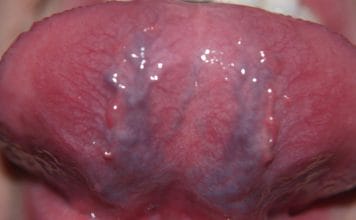There are numerous online discussion forums devoted to dental hygiene career advice. Many of these discussions focus around “getting out of the operatory” as countless hygienists begin to feel like the operatory isn’t for them anymore after several years in practice. You may be a seasoned hygienist who needs a change, or you may be practicing in a difficult work environment with negative energy, which has caused you to doubt your love for clinical hygiene. However, it may not be direct patient care that you have fallen out of love with. You need to determine if a change in patient population may be just what you need to bring back your passion for patient care. If so, then public health may be for you!
1) Private Practice Burnout
Although there are amazing private practices out there, and many hygienists spend their entire career in one, private practice is not for everyone. In public health positions, variety and constant change are the name of the game. For example, if you work in a school setting with portable equipment, you might find yourself setting up your clinic in many different parts of the school; the gym, cafeteria, a stage, the library, art room, music room, hallway, or even the principal’s office! You could even be at a different location every day of the week, working with a different age group. Therefore, if you like the idea of a constantly changing environment, then public health may be for you!
2) Different Patient Population
The patients you will serve in a public health setting will be very different from the ones you treated in private practice. Public and community health clinics have a mission to provide access to care to populations who have limited funds to pay for dental care and/or are covered by Medicaid. Dental needs tend to be more extensive since this population often has not had regular dental care.
The differences do not end there; where you treat them may be very different from your private practice operatory. As mentioned above, you could be traveling to schools, working in a mobile unit, or providing dental screenings in other community locations such as a food bank.
Additionally, while hygienists grow accustomed to treating many of the same clients over and over in private practice, building relationships over time, this is generally not the case in public health. A hygienist working in public health would need to realize that they may not be developing long-term relationships with patients as the population served in public health settings tends to be more transient.
3) Inter-professional Collaboration
As evidence of the oral-systemic link to overall health continues to mount, the importance of inter-professional collaboration between dental hygienists and other healthcare providers will continue to grow. Positions that provide the opportunity to collaborate with other healthcare professionals and service providers, face-to-face, already abound in public health settings.
Examples include working with school nurses in school sealant programs, or training nurses how to apply fluoride varnish to the children they serve in Women, Infants, and Children (WIC) clinics. Hygienists may also find themselves consulting with behavioral health staff if you treat mutual clients in community/public health facilities. Also, if you are working with a refugee population, you might also collaborate with a resettlement agency in order to best serve your refugee clients.
4) Opportunity for Non-clinical Roles
Many public health positions held by dental hygienists include non-clinical responsibilities. This could include community outreach, developing and presenting oral health education programs to all ages, participating in health fairs, and the list goes on. Hygienists could also work in administrative roles, managing and implementing public health dental programs. With the recent creation of the Community Dental Health Worker (CDHW) designation, hygienists also have the opportunity to study public health principles and reach underserved populations by providing education, case management and linking clients to public health dental services.1
5) Public Health Opportunities Will Continue to Expand
As of 2012, the United States population over age 65 was estimated to be about 43.1 million, and that number is expected to climb to 83.7 million by 2050.2 Thus, the population of older adults that will not be easily able to access dental care at a traditional dental office is expected to continue to grow. Many of these older adults will need the care to come to them; dental hygienists who work in public health can help meet the needs of this large population.
Forty-two states now allow the public to have direct access to a dental hygienist without prior examination of a dentist.3 Moreover, dental hygienists in 18 states can be directly reimbursed by Medicaid for services provided.3 These are exciting times to be a dental hygienist!
I look forward to seeing how my dental hygiene colleagues from across the nation continue to develop creative ways to serve the population which needs and benefits from public health dental hygiene services. Our future is bright!
SEE ALSO: New Year, New You: A Volunteering Resolution for Dental Hygienists
References
- Community Dental Health Coordinators Provide Solutions Now. Retrieved from https://www.ada.org/~/media/ADA/Public%20Programs/Files/ADA_CDHC_Infographic.pdf?la=en
- Hogan H., Ortman, J. M., Velkoff, V. A. (2014). An aging Nation: The older population in the United States. United States Census Bureau. 1-28. Retrieved from: https://www.census.gov/prod/2014pubs/p25-1140.pdf
- 2017/2018 ADHA annual Report. Retrieved from: http://www.adha.org/resources-docs/2018_ADHA_Annual_Report.pdf














